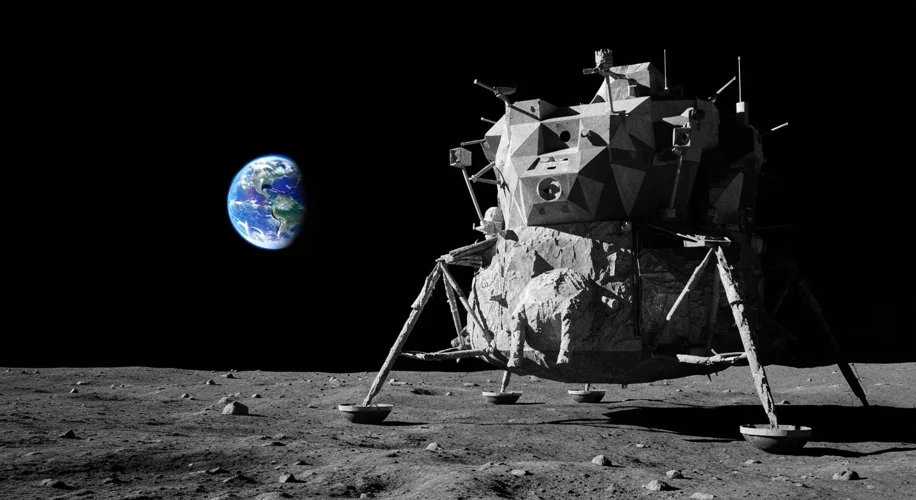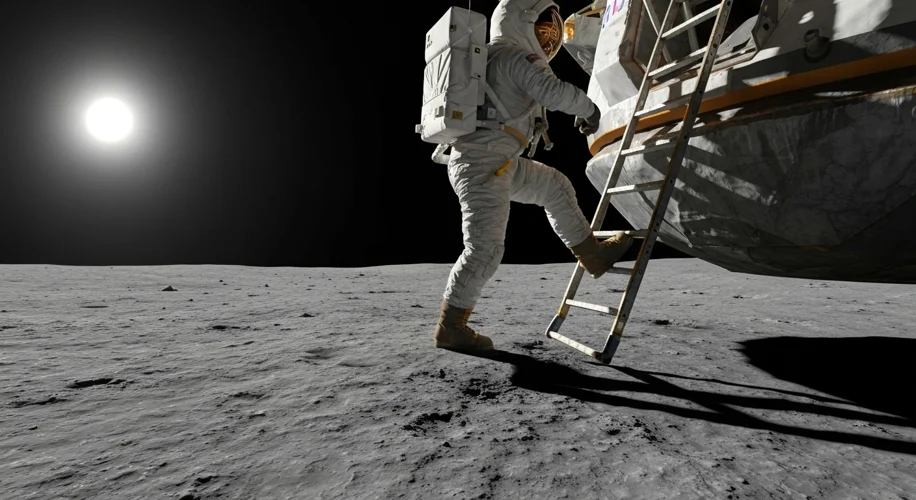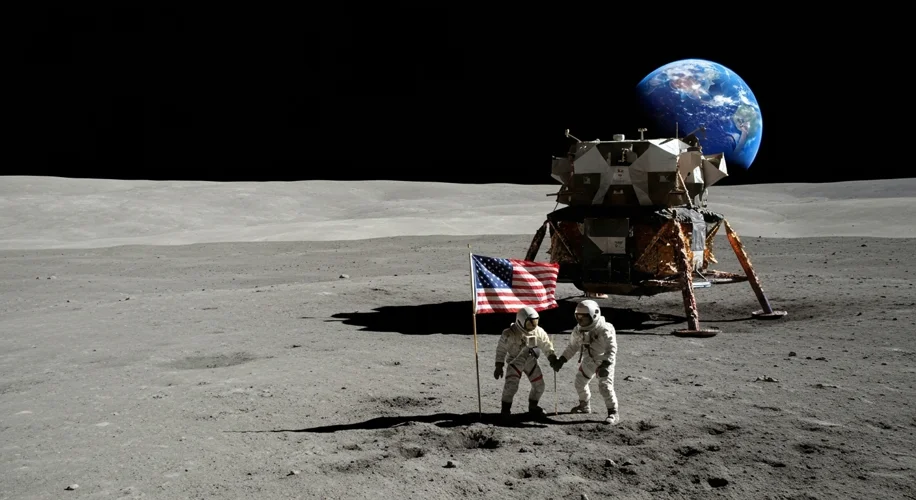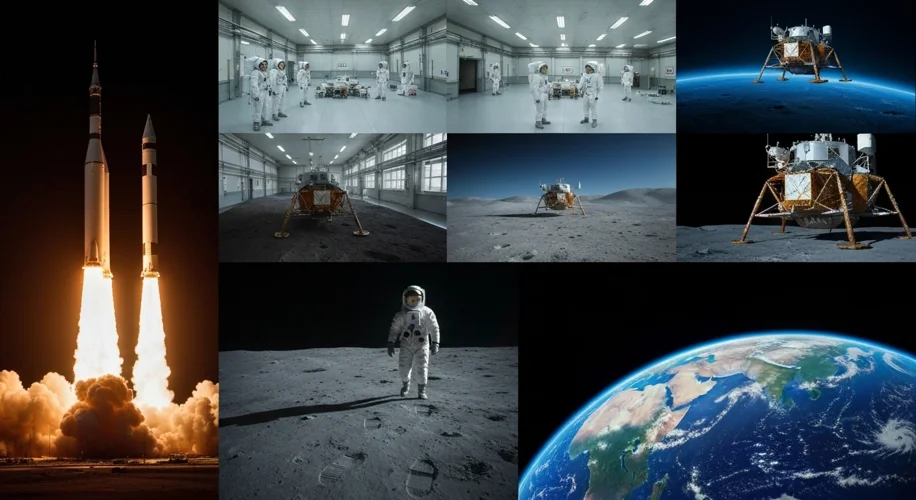The year is 1969. The world holds its breath, eyes glued to flickering television screens, ears straining to catch every crackle from millions of miles away. The air is thick with anticipation, a palpable blend of fear and wonder. For centuries, humanity had gazed at the moon, a silent, silvery sentinel in the night sky, a celestial mystery seemingly forever out of reach. But on July 20, 1969, that barrier shattered. The impossible became reality.
This was not merely a technological feat; it was the culmination of a decade of relentless ambition, a high-stakes gamble fueled by Cold War rivalry and a burning desire to prove the superiority of a nation’s spirit and ingenuity. The journey to the moon was a saga of audacious dreams, towering intellects, and the sheer grit of thousands of individuals who dared to challenge the heavens.

The backdrop for this monumental achievement was the tense geopolitical landscape of the mid-20th century. The Soviet Union, with its early successes in space, including the launch of Sputnik and Yuri Gagarin’s historic flight, had effectively declared victory in the initial stages of the Space Race. This prompted a defiant response from the United States. In 1961, President John F. Kennedy, standing before a captivated Congress, declared a national goal: to land a man on the Moon and return him safely to Earth before the decade was out.
This wasn’t just about scientific exploration; it was a battle for ideological dominance. The moon, a neutral territory in the cosmic arena, became the ultimate prize. The race was on, and the stakes were astronomically high. The Apollo program, a colossal undertaking, was born from this imperative. It was a testament to the American spirit of innovation and a willingness to invest vast resources – an estimated $25.4 billion (equivalent to hundreds of billions today) – into a single, audacious goal.
At the heart of this endeavor were the astronauts, men chosen for their courage, skill, and steely nerves. Neil Armstrong, Buzz Aldrin, and Michael Collins, the crew of Apollo 11, became the embodiment of this dream. Armstrong, the stoic commander, the first to set foot on lunar soil; Aldrin, the methodical pilot, his words echoing the profound solitude and alien beauty of their surroundings; and Collins, the vital link to Earth, orbiting alone in the command module, a testament to the vastness of space and the risks involved.
But the astronauts were merely the visible tip of an iceberg of human endeavor. Behind them stood a legion of engineers, scientists, mathematicians, and technicians at NASA and its contractors. These were the unsung heroes, the minds that designed the Saturn V rocket, the most powerful machine ever built, capable of lifting 6.2 million pounds of thrust. They developed the intricate guidance systems, the life support, and the communication networks that spanned the vast gulf between Earth and the Moon. They grappled with complex calculations, sleepless nights, and the constant threat of catastrophic failure. The precision required was mind-boggling; a slight miscalculation could spell disaster.
On July 16, 1969, the Saturn V rocket, a towering monument to human ambition, thundered to life at Kennedy Space Center in Florida. The ground trembled, and a pillar of fire lit up the sky. Inside the command module, ‘Columbia,’ Armstrong, Aldrin, and Collins embarked on their epic voyage. For three days, they traversed the void, the Earth shrinking behind them, the Moon growing ever larger.

On July 20, as Armstrong and Aldrin descended in the lunar module ‘Eagle,’ the tension reached its peak. The landing was not without its perils. The module’s computer was overloaded, forcing Armstrong to take manual control, steering the Eagle over a boulder-strewn crater to find a safe landing spot. The fuel was critically low. Finally, at 4:17 PM EDT, Armstrong’s calm voice crackled through the speakers: “Houston, Tranquility Base here. The Eagle has landed.” A collective sigh of relief swept across mission control.
A few hours later, at 10:56 PM EDT, Neil Armstrong uttered the immortal words: “That’s one small step for man, one giant leap for mankind.” He descended onto the lunar surface, leaving the first human footprints in the moondust. Buzz Aldrin soon followed, and together they planted the American flag, collected samples of lunar rock and soil, and conducted experiments. They were emissaries of an entire planet, standing on alien ground, a testament to what humanity could achieve when united by a singular purpose.

The impact of the moon landing was profound and multifaceted. It was a resounding victory for the United States in the Cold War, a powerful demonstration of technological and organizational prowess. It inspired a generation, sparking interest in science, technology, engineering, and mathematics (STEM) fields. The images of Earth from space, a fragile blue marble suspended in the blackness, fostered a sense of global unity and environmental awareness, a perspective famously known as the ‘Overview Effect.’
The scientific discoveries were also significant. The lunar samples brought back provided invaluable insights into the Moon’s formation, its geology, and the history of the solar system. The technologies developed for the Apollo program, from miniaturized electronics to advanced materials, had a ripple effect, leading to innovations in countless everyday products.
However, the moon landing was not without its critics. The immense cost, especially in the context of domestic social issues, was a point of contention. Some questioned the priorities, arguing that the money could have been better spent addressing poverty, inequality, or disease. Yet, proponents argued that the inspirational value, the technological advancements, and the scientific knowledge gained far outweighed the financial investment.
The legacy of Apollo 11 is undeniable. It remains one of humanity’s greatest achievements, a symbol of what is possible when we dare to dream big and work collaboratively. It proved that the seemingly insurmountable could be conquered, that the heavens were not just for contemplation but for exploration. The faint footprints left on the Moon serve as a perpetual reminder of our potential, a whisper across the cosmos that on one bright summer day in 1969, humanity reached for the stars and touched them.

